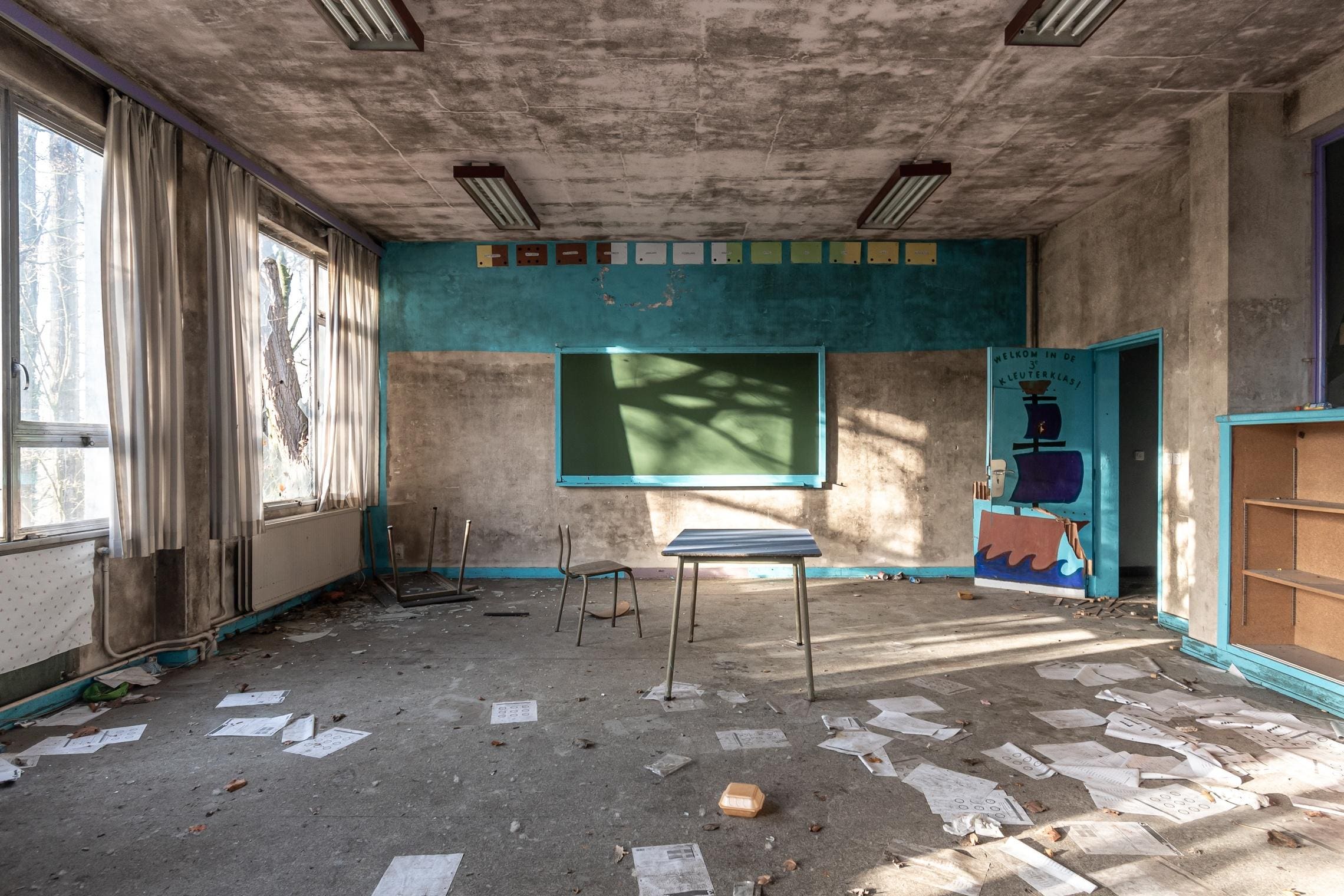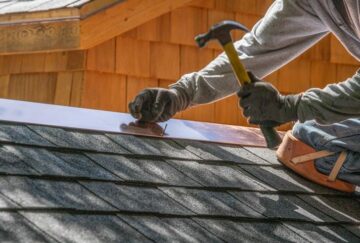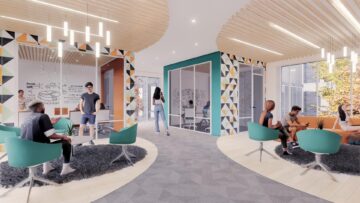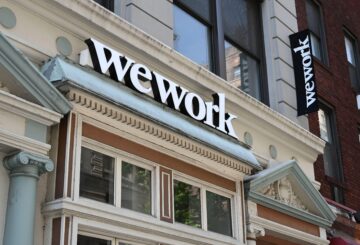
Many developers and design firms have looked to the adaptive reuse of underutilized office buildings as an answer to today’s dearth of affordable housing.
But a superior solution may be found in converting the schools of yesteryear to much-needed housing. That is the conviction of architects at Moody Nolan, the nation’s largest Black-owned architecture firm, which has successfully undertaken several such conversions.
“Breathing new life into existing structures is impactful across generations, as it can revitalize entire neighborhoods,” observes Yanitza Brongers-Marrero, the firm’s director of housing. “But it is not without its challenges. Converting schools to housing can be difficult as it presents technical challenges and the need for structural modifications to meet building codes and accessibility standards.
“In existing buildings, the floor plates may yield units that are too big and not efficient or affordable. In addition, modifying existing concrete masonry walls may require intensive labor and added costs.”
Built-in advantages
Unlike commercial office buildings, which often are situated far from supermarkets and other necessities of residential life, schools offer the benefit of being located in enclaves that already effectively serve hundreds or thousands of residents. Schools are often proximate to outdoor space, offering opportunity for apartment grounds and parking.
They also feature sprawling floor plates that can accommodate residences and amenities. School gyms can find new life as fitness centers, and lunchrooms can be converted into large communal spaces and lounge areas. Finally, schools of virtually any era are known for showcasing extensive fenestration. The features ensuring students’ classrooms were bathed with natural light in 20th Century schools serve well in addressing the demands for natural light among homeowners in the 21st.
“This development approach can help salvage a substantial number of historic school buildings that contribute to neighborhoods, preserve a legacy and provide a sustainable approach that reduces carbon emissions,” Brongers-Marrero says.
“Adaptive reuse projects provide architects with creative autonomy design, something that is practical, and provides high-quality housing that enhances the character and sense of pride in many neighborhoods across the nation.”
An example of Moody Nolan’s school-to-residential-housing work is the conversion of a 108-year-old Cleveland, Ohio school into Empire Senior Housing.
Battlement parapets, stretcher bond masonry, limestone surrounds and Tudor arched doorways emblematic of the school’s Jacobethan Revival design are being maintained and repaired. In all three floors of the school building, classrooms and offices are being converted to new apartment homes. The auditorium that once showcased student plays is to be turned into a community fitness room. It’s historic stage and design elements will be retained.
Back to school
Looking to abandoned schools to provide the raw material for future housing is a trend a number of states and cities are embracing. Among places where the concept appears to be winning sizable numbers of converts is in Chicago. A decade ago, Chicago Public Schools (CPS) launched an initiative to repurpose four dozen school buildings across the Windy City. The city found that using a city landmark designation allowed it to gain incentives that helped turn rehabilitation endeavors involving private developers into viable undertakings.
The former Elizabeth Peabody School, built in 1884 in the city’s near Northwest Side Noble Square neighborhood, has within the past three years been converted to Peabody School Apartments, with luxury units renting for $3,200 a month and up.
Mulligan School, another Northwest Side institution, this one built back in 1889, saw its 24 original classrooms turned into a like number of very high-end apartment homes featuring 14-foot-high ceilings, oversized windows and fireplaces. This summer, the Chicago Plan Commission approved a $26.6 million project intended to convert Woods Elementary School, an abandoned school in the city’s South Side Englewood neighborhood, into 48 units of affordable housing, along with a 22,000-square-foot health center.
One of the best-publicized efforts was the conversion of Bowtie High in Homestead, Pa., a Pittsburgh suburb, into a 31-unit apartment community.
The multifamily property retained a number of features of the school including the auditorium’s hardwood floors and, in some units, the original chalkboards that lined entire walls of classrooms.
Thousands of shuttered schools dot the U.S. landscape. The National Center for Education Statistics reports 1,130 school closures occurred during 2019 and 2020 alone. Evidently there’s a lot of opportunity for developers to create more sustainable and affordable multifamily housing simply by directing themselves “back to school.”
- SEO Powered Content & PR Distribution. Get Amplified Today.
- PlatoData.Network Vertical Generative Ai. Empower Yourself. Access Here.
- PlatoAiStream. Web3 Intelligence. Knowledge Amplified. Access Here.
- PlatoESG. Automotive / EVs, Carbon, CleanTech, Energy, Environment, Solar, Waste Management. Access Here.
- PlatoHealth. Biotech and Clinical Trials Intelligence. Access Here.
- ChartPrime. Elevate your Trading Game with ChartPrime. Access Here.
- BlockOffsets. Modernizing Environmental Offset Ownership. Access Here.
- Source: https://www.forbes.com/sites/jeffsteele/2023/08/31/abandoned-schools-garner-top-grades-in-adaptive-reuse/
- :has
- :is
- :not
- :where
- $3
- $UP
- 1
- 200
- 2019
- 2020
- 21st
- 22
- 24
- a
- accessibility
- accommodate
- across
- added
- addition
- addressing
- affordable
- affordable housing
- ago
- All
- allowed
- alone
- along
- already
- also
- amenities
- among
- an
- and
- Another
- answer
- any
- Apartment
- apartments
- approach
- approved
- architects
- architecture
- ARE
- areas
- AS
- At
- back
- BE
- been
- being
- benefit
- Big
- bond
- Bowtie
- Building
- buildings
- built
- by
- CAN
- carbon
- carbon emissions
- Center
- Centers
- Century
- challenges
- character
- chicago
- Cities
- City
- cleveland
- Codes
- commercial
- commission
- communal
- community
- concept
- contribute
- Conversion
- conversions
- convert
- converted
- converting
- conviction
- Costs
- create
- Creative
- decade
- demands
- Design
- designation
- developers
- Development
- difficult
- directing
- Director
- DOT
- dozen
- during
- Education
- effectively
- efficient
- efforts
- elements
- embracing
- Emissions
- Empire
- endeavors
- Enhances
- ensuring
- Entire
- Era
- example
- existing
- extensive
- far
- Feature
- Features
- Featuring
- Finally
- Find
- Firm
- firms
- fitness
- Floor
- floors
- For
- Forbes
- Former
- found
- four
- from
- future
- Gain
- generations
- grounds
- Have
- Health
- help
- helped
- High
- High-End
- high-quality
- historic
- Homes
- housing
- HTTPS
- Hundreds
- impactful
- in
- Incentives
- Including
- Initiative
- Institution
- intended
- into
- involving
- IT
- ITS
- jpg
- known
- labor
- landmark
- landscape
- large
- largest
- launched
- Legacy
- Life
- light
- like
- lined
- located
- looked
- Lot
- Lounge
- Luxury
- many
- material
- May..
- Meet
- million
- Modifications
- Month
- more
- much-needed
- nation
- National
- Nations
- Natural
- Near
- necessities
- Need
- New
- Noble
- number
- numbers
- Observes
- occurred
- of
- offer
- offering
- Office
- offices
- often
- Ohio
- once
- ONE
- Opportunity
- or
- original
- Other
- Outdoor
- parking
- past
- pittsburgh
- Places
- plan
- plato
- Plato Data Intelligence
- PlatoData
- plays
- Practical
- presents
- pride
- private
- project
- projects
- property
- provide
- provides
- public
- Raw
- reduces
- rehabilitation
- Reports
- require
- residential
- residents
- reuse
- Room
- s
- saw
- says
- School
- Schools
- senior
- sense
- serve
- several
- showcased
- showcasing
- side
- simply
- situated
- sizable
- solution
- some
- something
- South
- Space
- spaces
- square
- Stage
- standards
- States
- statistics
- structural
- structures
- Student
- substantial
- Successfully
- such
- summer
- superior
- sustainable
- Technical
- that
- The
- themselves
- this
- thousands
- three
- to
- today’s
- too
- top
- Trend
- TURN
- Turned
- u.s.
- units
- using
- very
- viable
- virtually
- was
- WELL
- were
- which
- will
- windows
- winning
- with
- within
- without
- Woods
- Work
- years
- Yield
- zephyrnet












